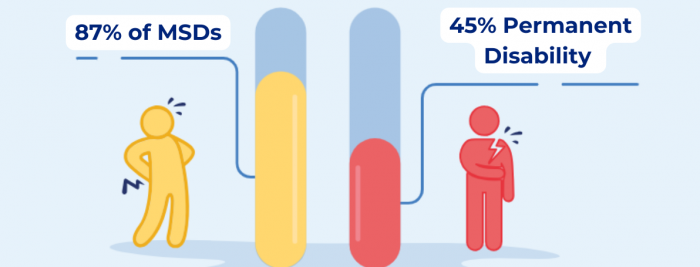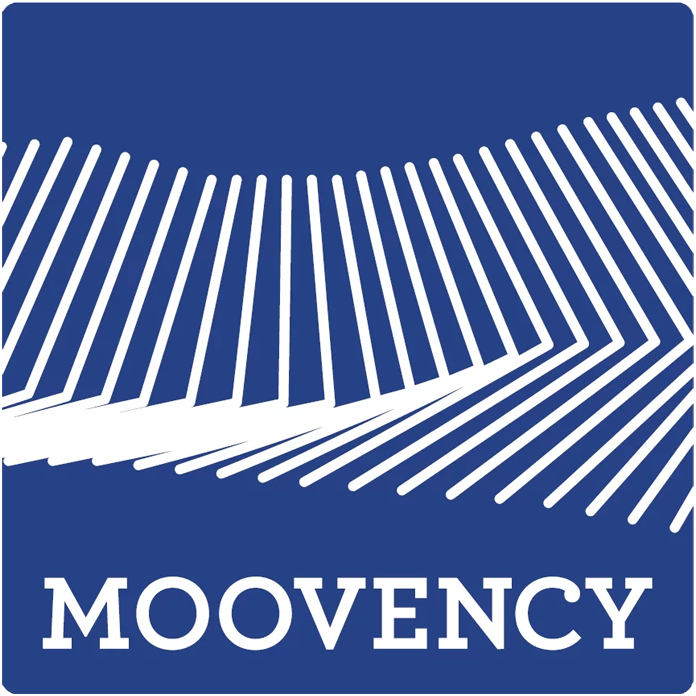Reducing recruitment pressures by preventing MSDs
Since the health crisis, the phenomenon has become widespread, and French companies are now finding it hard to recruit. The primary and secondary sectors, particularly the agri-food, construction, industry and logistics sectors, have been hit hard by recruitment tensions. And what if, faced with a tight labour market and a shortage of applicants, occupational health and safety measures were decisive in attracting talent? At Moovency, we’re convinced that preventing MSDs is a solution. We explain why.
Recruitment difficulties are intensifying in the building and public works, industry, agri-food and logistics sectors
The construction, industry, agri-food and logistics sectors are finding it hard to recruit and retain staff.
For example, in 2021, recruitment difficulties have risen by 14 points in the construction sector. In 2019, a Pôle Emploi survey revealed that unskilled workers in the agri-food industry were the 5th most under-recruited occupation.
As the months go by, the imbalance between supply and demand increases, to the point where it becomes difficult to replace a colleague on retirement or sick leave.
These labour problems are a real brake on businesses. They undermine the productivity of production lines and hamper the development of France’s economic fabric.
The causes of recruitment tensions in the primary and secondary sectors
This is due to a number of factors, including jobs that are considered unattractive or working conditions that are restrictive. To make matters worse, these short-staffed occupations often suffer from a negative image.
As a result, some employment areas are short of qualified operators, as is the case with food processing plants in the Poitou region. Workers who are already in post do not hesitate to put employers in competition with each other.
Solutions for recruiting in construction and public works, logistics, industry and the food industry
If companies in the building and public works, logistics, industry and agri-food sectors want to reverse the trend, they will need to meet the expectations of applicants.
Meeting the needs of applicants
There are a number of possible levers that can be used to stimulate the recruitment of employees in shortage occupations:
- Raising salaries ;
- Create partnerships with organisations that are in contact with jobseekers (such as Pôle Emploi or Mission Locale) to help them find out about these occupations;
- Support training;
- Authorise part-time work ;
- Or offering benefits in kind.
These measures are also useful for building long-term team loyalty.
Boosting attractiveness through the company’s health and safety policy
On the other hand, one solution that companies think less about is their occupational health and safety policy… and the boost it can give to their employer brand!
As Pierre Plantard, co-founder of Moovency, points out: “A company that takes charge of its MSD prevention policy shows that it cares about its employees. It’s a good signal to send to future job applicants.
At a time when we are talking more and more about well-being at work, corporate social responsibility (CSR) and quality of life and working conditions (QWL), preventive measures represent a major asset: accidents at work are falling, as is the rate of absenteeism. Operator satisfaction is rising.

And when it comes to occupational risks, France still has a long way to go! Musculoskeletal disorders (MSDs) now account for 87% of occupational illnesses, and 45% of them result in permanent disability for employees. In some of the most “at-risk” sectors, such as transport and commerce, MSDs even account for 95% and 98% of recorded occupational illnesses!
Preventing MSDs to prevent departures and absenteeism
The growing proportion of workers over the age of fifty in the workforce makes the issue of health and safety at work even more crucial for companies in the primary and secondary sectors.
This age group is bearing the full brunt of the consequences of inadequate working conditions. If these skilled workers leave, valuable know-how also leaves the company.
What’s more, the higher the absenteeism rate, the more the company has to recruit. In other words, there’s nothing worse to exacerbate existing recruitment tensions!
It’s easy to generalise the fight against MSDs with Moovency
Combating MSDs to combat recruitment problems is a daring gamble, but we believe in it. Since 2018, Moovency has been helping companies in the primary and secondary sectors to roll out preventive health initiatives to combat MSDs.
By combining an innovative technological solution with the business expertise of our ergonomists, we are able to assess the biomechanical risks at the root of musculoskeletal disorders. We can help you to prevent their appearance over the long term and improve your operators’ working conditions.
